Visiting a Japanese shrine (Jinja) is a cultural and spiritual experience, rich in tradition and etiquette.
Whether you are planning to visit Japan or are simply interested in Japanese customs, understanding the proper way to behave at a shrine can enrich your experience and show respect to this aspect of Japanese cultural heritage.
In this article, we will introduce the steps and etiquette of praying at a Japanese shrine, from the initial approach to the final bow.
Here are Some Small Questions about Japanese Shrine
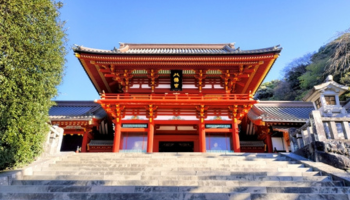
What is the point of a shrine?
Shrines are places where Shinto deities are worshipped. They play a crucial role as sites for venerating nature, ancestors, and local guardian deities in Japan, providing a space to express gratitude and prayers.
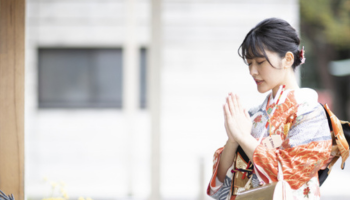
Why do Japanese people pray at shrines?
Japanese people visit shrines to communicate their thanks and wishes to the deities and to purify their minds and bodies. Visiting shrines on special days or at significant life moments also serves as an opportunity for self-reflection and renewing personal commitments.

Can foreigners pray at Shinto shrines?
Yes, foreigners can pray at Shinto shrines. Shrines are open to everyone, and while proper manners are expected, people of all beliefs can participate in shrine visits.
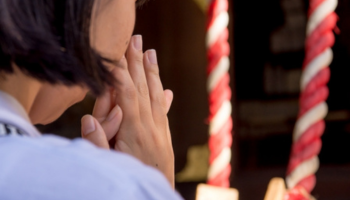
Why do Japanese clap twice when praying?
Clapping twice is thought to have the same meaning as ringing a bell; it is believed to ward off evil spirits with the sound of the claps. Additionally, clapping is considered a way to announce one’s presence to the deity.

What is the difference between a temple and a shrine?
Temples are primarily Buddhist facilities that enshrine Buddha and other Buddhist figures. In contrast, shrines are Shinto facilities that worship a variety of deities, including gods of nature and historical figures. There are also differences in worship practices and architectural styles between temples and shrines.
Exploring the Structure of a Japanese Shrine: Key Components and Their Significance
Japanese shrines are structured and arranged with unique meanings and functions.
Understanding the key components of a shrine can deepen your appreciation for its beauty and cultural significance.
Here, we will explain the process in detail, from entering the shrine to the etiquette of worship and the proper way to leave.
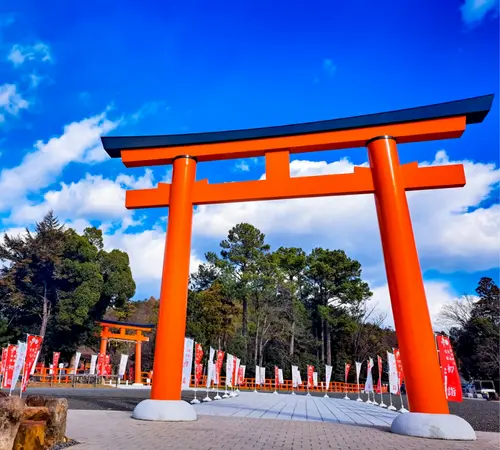
Torii Gate
When visiting a shrine, the first thing you will encounter is the torii gate. This gate marks the entrance to the sacred space and symbolizes the boundary between the divine and human realms. The etiquette for passing through a torii gate is as follows:
Passing through it is considered an act of purification. Before entering, it is proper to bow as a sign of respect. Avoid walking through the center, which is the deity’s path; instead, pass through the side, starting with the corresponding foot—right foot on the right side, left foot on the left.
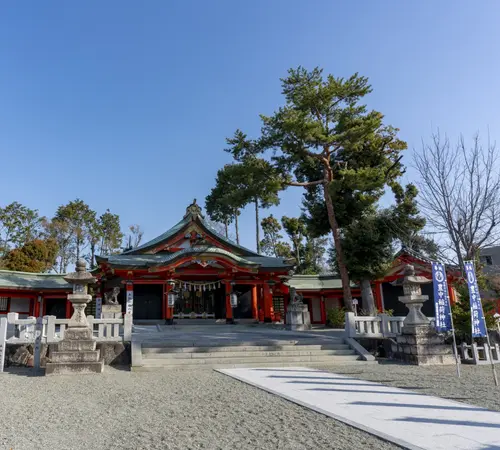
Sandō (Approach)
This is the path leading from the torii gate to the main shrine building, guiding worshippers to the heart of the shrine, often lined with trees or paved with stones.
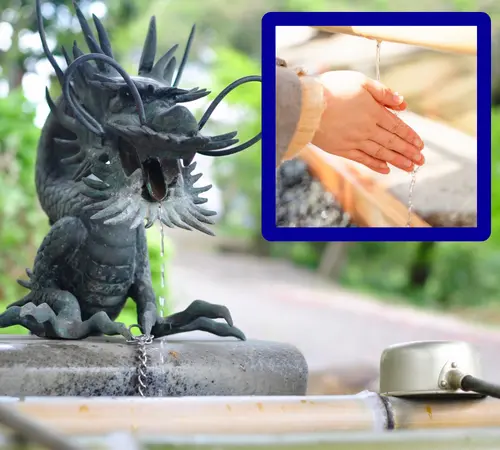
Temizuya (Water Pavilion)
Located along the approach, this water basin is used for cleansing the hands and mouth to purify the body and spirit before approaching the gods.
The etiquette for cleansing your hands is below:
- Hold the ladle with your right hand and scoop plenty of water to rinse your left hand.
- Switch the ladle to your left hand and rinse your right hand.
- Take the ladle back in your right hand, cup water with your left hand, and rinse your mouth. Do not put the ladle directly to your mouth.
- Rinse your left hand again.
- Use the remaining water to cleanse the handle of the ladle, then return it to its place.

Haiden (Worship Hall)
At the worship hall, offerings are made to the gods as a token of gratitude. These offerings, known as “saisen,” are contributions of thanks to the deities.
Traditionally, offerings included sheaves of rice, which is why they are also referred to as “hatsuho-ryo,” meaning the first rice harvest offering.
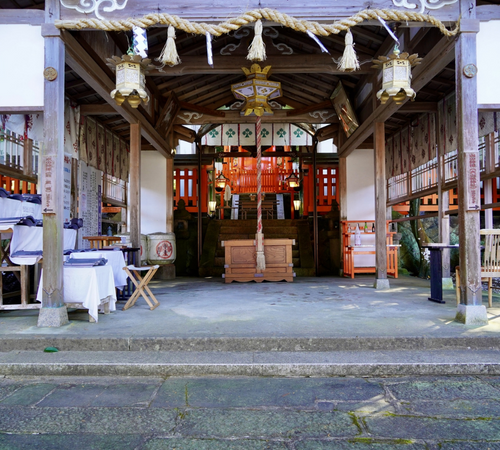
Honden (Main Hall)
The most sacred part of the shrine, where the deity is enshrined. While general visitors cannot typically enter the honden, they can offer prayers from the haiden.
The places for offering prayers are the haiden (worship hall) or the honden (main hall).
What are the Three Steps to Pray at a Shrine?
- First Bow (一礼, Ichi-rei)
Stand in front of the shrine’s offering box, straighten your posture, and perform a deep bow at about a 90-degree angle. This shows your respect and reverence as you begin your prayer. - First Clap (一拍手, Ichi-hakushu)
After straightening up from your bow, clap your hands twice. The claps are meant to get the deity’s attention and express your sincerity. When clapping, keep your hands at a level comfortable to you, typically around chest height, with the claps being audible but not overly loud. - Second Bow (二礼, Ni-rei)
Following the claps, bow deeply once again at the same angle. This bow signifies the conclusion of your prayer and shows gratitude to the deity.
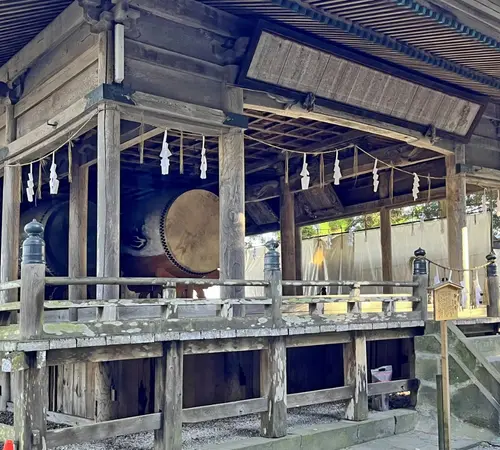
Kaguraden (Hall for Sacred Dances)
A special building where sacred dances and other ceremonial performances are dedicated to entertain the deities, providing an enjoyable experience for both the gods and the visitors.

Bow at the Torii Gate When Leaving
When leaving a shrine, it is customary to bow in front of the torii gate. This bow is a gesture of gratitude and respect towards the deity, serving as an important etiquette before departing from the sacred space.
This quiet act, performed while facing forward, also deepens the spiritual connection and sets the tone for future visits.
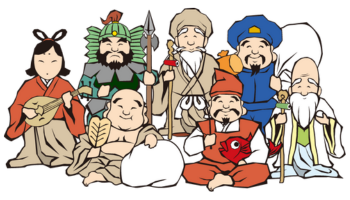
Introducing Yourself to God
When praying in front of a deity, it is recommended to introduce yourself by name and address in your mind.
This is considered a form of greeting to the deity, especially important when visiting a shrine for the first time. If you are praying for someone else, such as for a child’s success in exams or a family member’s recovery from illness, you should also mention their name and address.
Attractions in the Japanese Shrine
After visiting a shrine in Japan, there are many delightful experiences and souvenirs awaiting you.
Beyond the serene atmosphere of the shrine itself, you can enjoy browsing and purchasing traditional crafts, lucky charms, and local specialties. These items not only make for wonderful keepsakes but also offer a glimpse into Japan’s rich cultural heritage.
Explore the various shops and stands nearby to find unique and meaningful mementos of your visit.
Omikuji

Omikuji are fortune-telling paper strips found at Japanese shrines and temples.
Visitors first offer prayers to the deities or Buddha before drawing omikuji. They shake a box and pull out a numbered stick, then receive the corresponding omikuji. The fortune includes various aspects such as health, love, and work, and is marked with degrees of luck like “great blessing” (daikichi) or “curse” (kyo).
Good fortunes are kept, while bad fortunes are often tied to trees within the shrine grounds to ward off bad luck. This practice offers guidance and insight into one’s future.
Omamori
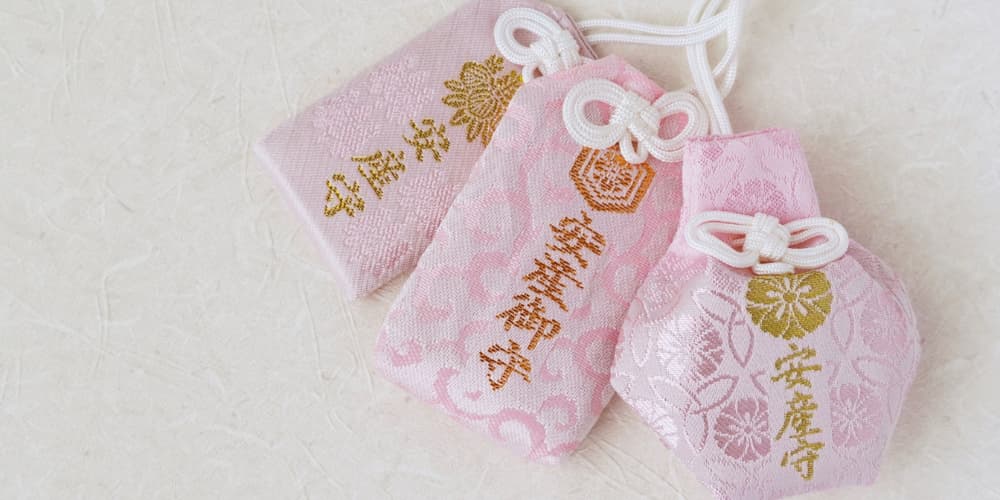
Omamori are small talismans or amulets given out at Japanese shrines and temples to protect the holder.
These charms come in various types, each catering to specific wishes or purposes, such as health, academic success, traffic safety, love, and protection against evil. Visitors purchase omamori and carry them or wear them to receive divine protection. It is customary to replace omamori annually, returning the old ones to the shrine or temple with gratitude.
Ema
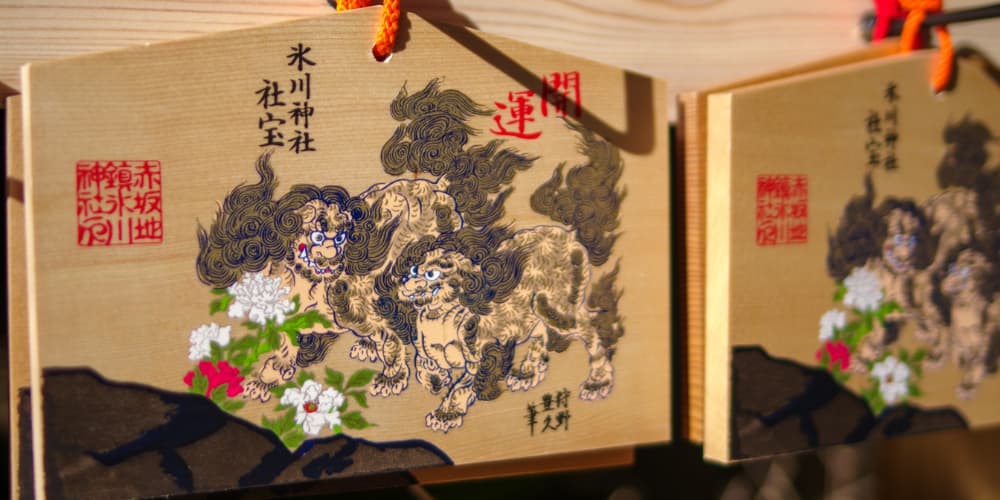
Ema are wooden plaques used in Japanese shrines to write down wishes and expressions of gratitude.
In ancient Japan, horses were offered to the gods as sacred gifts, but over time, these were replaced by ema. There are various types of ema, with wishes for health, academic success, love, and more written on them. Visitors purchase an ema, write their wish on it, and then hang it in a designated area at the shrine.
This practice is an important cultural ritual for conveying wishes to the gods.
Goshuin

Goshuin are stamps and calligraphy obtained at Japanese shrines and temples as proof of a visit.
Visitors bring a special goshuin book and receive the goshuin at each shrine or temple they visit. The goshuin typically includes the name of the shrine or temple, the date of the visit, and special prayers written in ink, along with a stamp. The goshuin book serves as a commemorative item, making it a valuable collection for many visitors.
Goshuin are popular not only as a testament to one’s faith but also as a way to experience and appreciate Japanese culture.
Oharai

Oharai is a purification ritual performed at Japanese shrines to cleanse and remove bad luck or misfortune.
During the ritual, a Shinto priest recites purification prayers and uses sacred objects such as paper, bells, and sakaki branches to purify the person or items. Oharai can be performed for various purposes, including personal health, family safety, and traffic safety, and it is a paid service.
Visitors apply for the ritual at the shrine and undergo the ceremony under the guidance of the priest. Oharai is an important Shinto practice to dispel bad luck and renew the mind and body.
Enjoy a Calm Moment at a Japanese Shrine
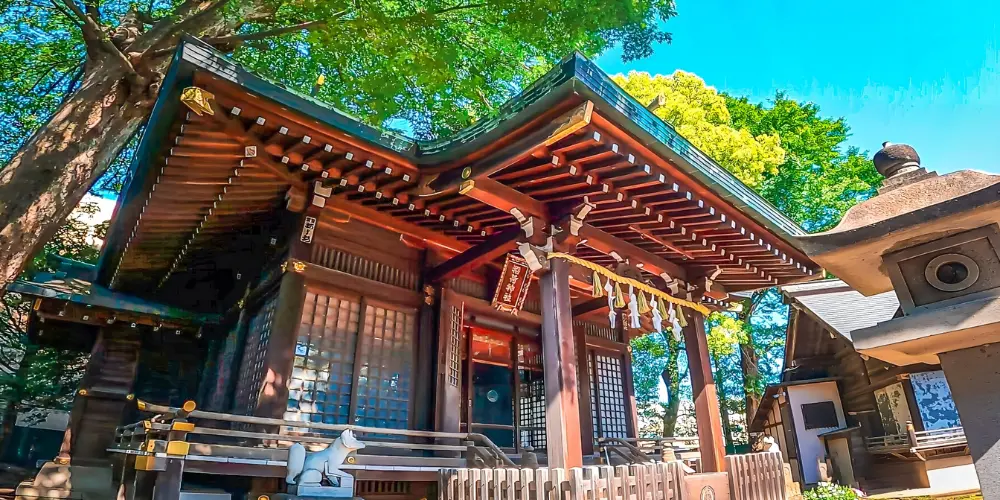
Visiting a Japanese shrine is a serene and soothing experience, blending spiritual practices with appreciation for tradition and nature.
Feel free to visit as many different shrines as you like. Experience the culture of Japan and receive the blessings each shrine has to offer. After offering your prayers, you are free to spend your time as you wish.
Whether you’re looking to recover from the fatigue of shopping and exploring, visiting a shrine can be a refreshing choice.
【Related Articles】
- Discover the Friendly, Fun and Delicious of Osaka – Enigmatic Japan Info
- Nara: Experiencing the Ancient Spirit of Japan – Enigmatic Japan Info
- Ancient Kyoto – An Experience Beyond Time – Enigmatic Japan Info
- Osaka Umeda Nightlife: 6 Must-Visit Spots ー Enigmatic Japan Info
- Tokyo to Osaka: How to Get There?ー Enigmatic Japan Info
- Kobe: A Cosmopolitan Gateway in Hyogo ー Enigmatic Japan Info
- Shinsaibashisuji Quick Guide: Shopping Hours ー Enigmatic Japan Info
- Wakayama: Land of Natural Wonders ー Enigmatic Japan Info
- BOOK OFF: Quality Thrift Finds in Japan! – Enigmatic Japan Info
- Asakusa: Shopping to Dining, All About Guide – Enigmatic Japan Info
